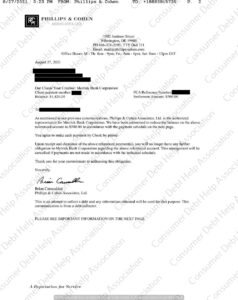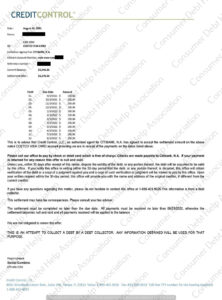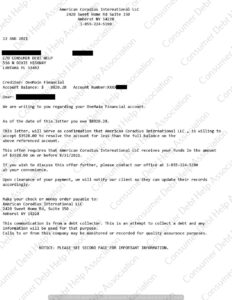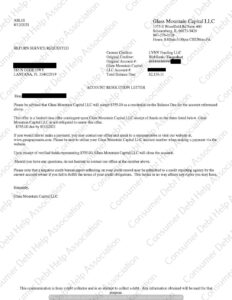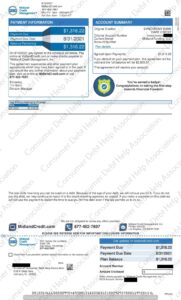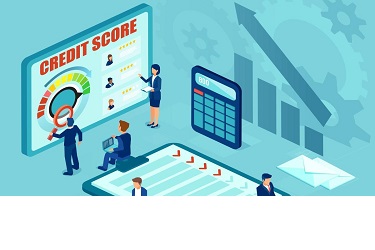If you’re like the 40% of credit card holders the American Bankers Association refers to as “revolvers,” you probably carry at least some debt from month to month. And if you’re a typical American, according to Experian, you have an average balance of $5,897 , with an additional $2,044 on a couple of retail credit cards.
Unfortunately, many consumers are uninformed and unprepared for the responsibility of paying with plastic. Nobody makes you take a class before they hand you that first card—or the next one, or the next. But the consequences of getting in over your head can be troublesome.
What else should you know about credit cards? Here are some do’s and don’ts to keep in mind:
Just Because You Can Get Another Credit Card Doesn’t Mean You Should
Once you prove your creditworthiness, you’ll likely receive other credit card offers in the mail. Retail stores you shop in often ask if you’d like to apply for their card, offering things like special discounts, partnerships, and card-holder shopping days to draw you in.
But unless the rewards are high and the annual percentage rate (APR) is low, you may choose to pass. Especially if you’re in a store and won’t have time to focus on the terms and fees in the agreement.
Remember: When you apply for a credit card, it can create a credit inquiry on your report because of the hard pull on your credit report. Unless your credit inquiry qualifies as rate shopping , too many inquiries in a short time period could cause a drop to your credit score.
A Credit Card Can Be Convenient—If You Keep Your Balance In Check
The clock starts ticking whenever you make a purchase using your credit card. Many credit card companies will give you a period of interest-free grace, but if you don’t pay off the balance within the grace period, you’ll start racking up interest.
Of course, using cash instead of credit for purchases is an option, especially for purchases made in person.
Thinking Twice Before Just Paying The Minimum
It’s easy to get into the mindset that you’re on track for the month because you paid the minimum payment due on your credit card statement. But that amount is typically based on a small percentage of your balance, typically between 1% and 3%, or a fixed dollar amount.
Unless you have a 0% credit card rate, letting your balance carry over can rack up additional interest.
Checking Your Statements Every Month
A thorough monthly review of credit card statements makes it possible to find billing mistakes and be sure your purchases and returns are accurately reflected.
It’s worth reviewing your statement for any subscription services you might be making automatic payments or renewals for. You could be paying for a service or app you don’t want anymore.
Reviewing your charges can also help you determine if you’ve been the victim of identity fraud . The faster you move to report any problems , the better off you typically are. The Fair Credit Billing Act (FCBA) instructs consumers to report unauthorized charges within 60 days after the statement was mailed, so making it a habit to check your statements as they come in—or reviewing them online at least once a month—can help you be aware of any issues and report them quickly.
If you’ve made late payments or missed a payment, your interest rate may have gone up—and you could be paying a much higher rate than you thought. Keeping track of this information will give you a more complete picture of the amount you owe.
Credit card statements also include information about how long it will take to pay off the bill if you send only the minimum payment each month, as well as how much you’ll pay in interest. Think of this information like nutrition facts on food packaging—it could be an encouragement to be financially healthier.
Reporting Misplaced, Lost, or Stolen Cards
Under the FCBA , a consumer’s liability for unauthorized use of their credit card is limited to $50. However, the FCBA also says if you report the loss before your credit card is used to make unauthorized purchases, you aren’t responsible for any charges you didn’t authorize.
If your credit card account number is stolen, but not the card, the FCBA also says you won’t be liable for unauthorized use. Credit card companies are generally quick to provide customers with new account numbers, passwords, and cards.
Using a Credit Card To Get Cash
Another piece of information available on a credit card statement is the APR charged for cash advances. Most likely, the interest rate charged for cash advances is several points higher than the rate charged for purchases.
If a credit card is used at an ATM, there may also be an additional fee charged by the machine’s owner.
So unless it’s an unavoidable emergency, it’s probably much better for your wallet to stick to your debit card or go old-school and cash a check.
Using a Credit Card For Purchases Just To Get the Rewards Points
Cash back and other perks make some cards more appealing than others. But that probably shouldn’t be an excuse to use a credit card if you’re not in a solid financial position. The trade-off probably isn’t worth it if you carry a balance.
Balance Transfer Cards Can Be Appealing, But…
Again, if you have solid credit, you may be getting offers for 0% balance transfer cards. And they may potentially save you hundreds, even thousands of dollars, if you can realistically pay off that balance in the designated period.
If not, the interest rate will increase after the introductory 0% interest period ends. And moving the remaining amount to yet another balance transfer card could ding your credit record, as every time you apply for a credit card a hard inquiry is pulled.
Negotiating Rates and Fees
Even the most attentive person might sometimes miss a credit card due date. This oversight, however, means a late fee and interest may be added to the account balance. If this happens more than once, you might incur a higher late fee than the first one and the account’s interest rate might increase.
It may be possible, however, to negotiate credit card interest rates and fees. If you’ve only had one late payment, it’s worth a call to customer service asking for the late fee to be waived. If there have been multiple late payments and you’re faced with an increased interest rate, it might take up to six months on-time payments before a credit card issuer is willing to consider lowering the interest rate.
A 2018 poll for CreditCards.com, the latest data on the topic , found that 56% of those who asked got a lower interest rate/APR, and 70% had an annual fee waived or lowered. So it may not hurt to call customer service and ask.
Knowing How Much Credit Is Being Utilized
The amount of debt owed is the second largest factor that makes up a person’s credit score. It accounts for 30% of the total score, and revolving credit accounts like credit cards are important in the calculation of a credit score. Someone who is using a high percentage of their credit card limit might be seen as potentially risky by lenders. But someone who uses a lower percentage of their credit card limit may be considered to be in a favorable financial position.
Credit card companies sometimes raise the credit limit of financially responsible customers. By keeping your account balance low, it can improve the credit utilization rate used to calculate your credit score.
The Takeaway
Credit card debt can feel overwhelming quickly, but a personal loan may help you get things under control.
You can’t just sweep away the debt and forget it, of course. But if your financial history is solid, getting approved for a personal loan interest rate that’s lower than your credit card rates could make your outstanding debt easier to deal with. Using a debt consolidation loan to consolidate multiple credit cards would also mean just one bill to pay each month instead of keeping track of multiple payments and due dates.
A consolidation loan with a respected lender, debt settlement, or debt consolidation can be part of a smart overall money management plan depending on your situation.




